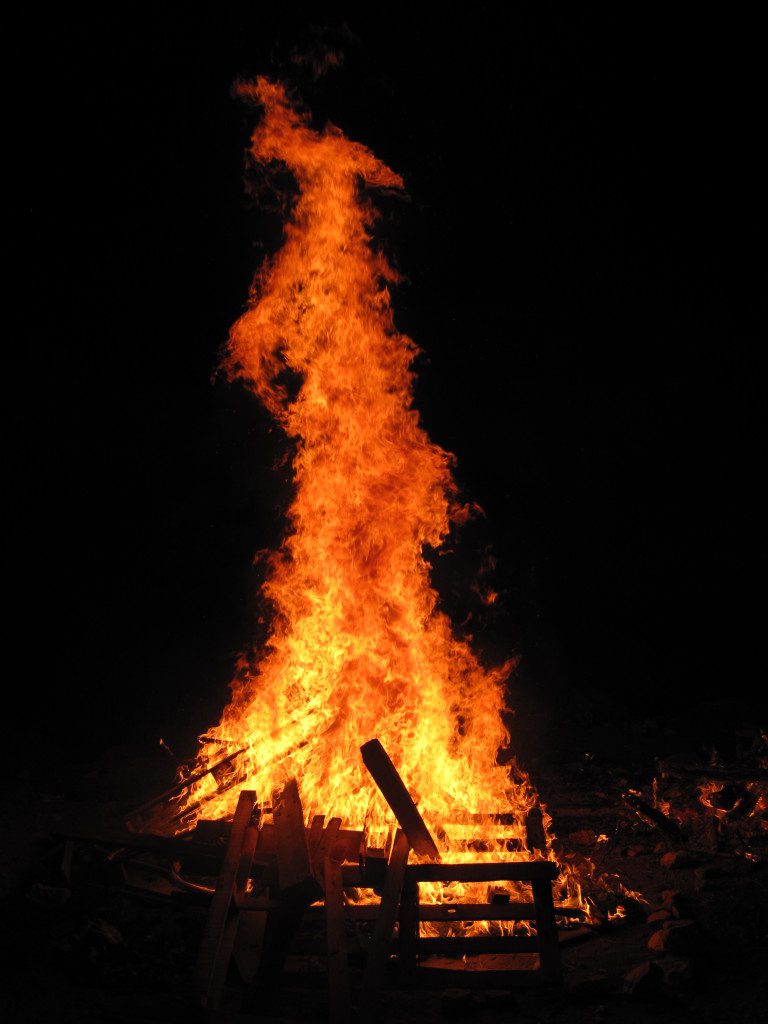Experiencing Lag BaOmer in Israel
April 20th 2015
 Most Jewish holidays are celebrated, albeit with variations, similarly both in and outside of Israel. However, there’s one ancient holiday that’s celebrated dramatically differently in Israel – that holiday is Lag BaOmer. Visitors who travel to Israel for this festival of campfires and mysticism just may find themselves discovering new aspects of their own tribal heritage.
Most Jewish holidays are celebrated, albeit with variations, similarly both in and outside of Israel. However, there’s one ancient holiday that’s celebrated dramatically differently in Israel – that holiday is Lag BaOmer. Visitors who travel to Israel for this festival of campfires and mysticism just may find themselves discovering new aspects of their own tribal heritage.
Lag BaOmer, a relatively minor holiday first mentioned in a 13th-century commentary on the Talmud, falls 33 days after the first night of Passover (“Lag” signifies 33 in Hebrew numerology). This day marks the yahrzeit (anniversary of the passing) of Rabbi Shimon Bar Yochai, a student Rabbi Akiva, the famous 2nd-century Jewish Sage. Considered the greatest Torah teacher in his time, Rabbi Shimon Bar Yochai is best known for having compiled the Zohar, Judaism’s primary Kabbalistic text.
Rabbi Shimon is buried in Meron in northern Israel. Visiting his burial site on Lag BaOmer is a once-in-a-lifetime experience. The area is overwhelmed with hundreds of thousands of visitors who come from all over Israel and all walks of life. The mountainside takes on a festive, carnival-like atmosphere, filled with live music, barbequing meats, mystically themed vending booths, picnics, prayer services and lots of free refreshments. People from all different backgrounds come to Meron to celebrate Lag BaOmer “with” Rabbi Shimon Bar Yochai.
There’s also a prominent custom to bring three-year-old boys to Meron for their first haircuts. This ceremonial shearing is known as an upsherin (in Yiddish) or a halakah (in Hebrew – not to be confused with halacha, meaning Jewish law). After the brief haircutting ritual, parents serve wine and sweets to their guests. Although an upsherin can take place any time around a boy’s third birthday, it is sometimes postponed until Lag BaOmer so it can take place in Meron on this auspicious day.
By far, the most significant custom of Lag BaOmer, the one no one in Israel can miss, is the custom of building bonfires. In nearly every empty lot in cities all over Israel, Israelis ignite piles of flammable materials, ranging from modest stacks of logs to the death-defying towers of wooden shipping palettes. It’s not unusual to witness many dozens of bonfires in an average Israeli town. Although primarily an activity for children, youth groups and families, adults have also been known to participate in building and tending bonfires on Lag BaOmer.
Alongside the bonfires, you can expect to see the ubiquitous Israeli mangalim – inexpensive, portable barbeques on which families grill everything from meat and vegetables to cheese sandwiches.











